Alert Bees’ Knees readers will remember from the October 3 issue that autumn's an ideal season to plant shrubs, especially those that look all pumpkin-spicy this time of year.
When I bother to lower my gaze from the treetops, I’m reminded there’s a whole world of shrubs that are as gorgeous as the attention-hogging trees. The best landscapes, in fact, include a club sandwich of layers, from ground-hugging perennials to sky-scraping canopy trees. Shrubs should be integral parts of that recipe. So, happy fall to all the hardworking and good-looking shrubs out there!
Except the invasive ones. Those, we can do without. Remember that neither “my garden center sells it” nor “it looks so fab in their display” are guarantees that a plant’s not a menace to our local ecosystems. Find out what’s native to your area here and what’s invasive here.
Let’s drill down to some specifics.
Invasive: Japanese barberry (Berberis thunbergii)
Japanese barberry is invasive throughout the northeastern U.S. from Maine to North Carolina and west to Wisconsin and Missouri. Yet it’s planted with abandon in landscapes and hedges around the country. It grows well in full sun to deep shade and forms dense stands in closed canopy forests, open woodlands, wetlands, fields and other areas, displacing native herbaceous and woody plants. One of the ways it does this is by changing the pH of the soil, making it less hospitable to the species that belong there. Birds like turkey and grouse eat and disperse the seeds far and wide. It also spreads through root creepers and tip rooting branches. There’s evidence it harbors deer ticks. The Invasive Plant Atlas of the U.S. says it’s listed as invasive in 19 states.
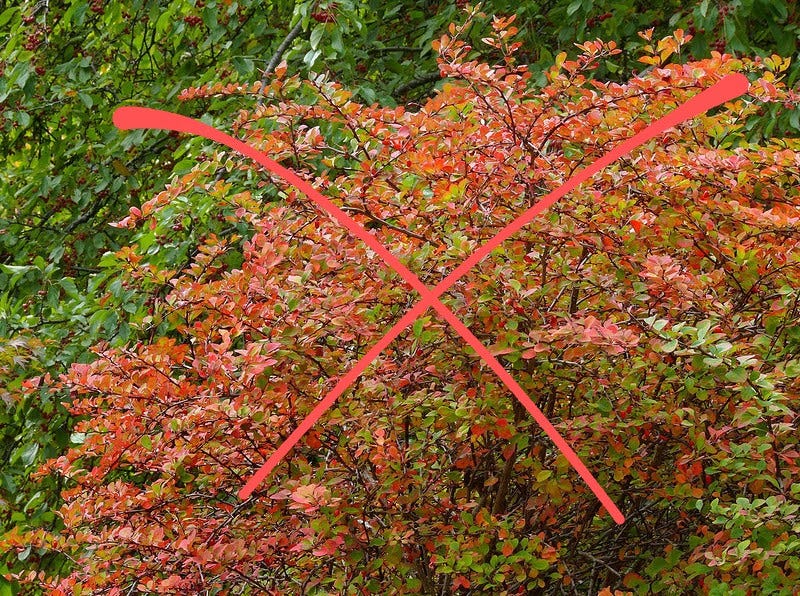
Native Alternatives: Highbush blueberry (Vaccinium corymbosum) or aromatic sumac (Rhus aromatica)
Highbush blueberry is native throughout much of the Northeast, mid-Atlantic, Midwest and Pacific Northwest. Its leaves turn red, orange, yellow and purple in the fall. Best of all, it bears delish and nutrish blueberries – a treat for you and the birds, depending on who gets there first. It in fact attracts some 30 species of birds, as well as lots of native bees. Remember those anthocyanins that turn leaves red and purple in the fall? They also give blueberries their characteristic hue. And they’re apparently good for your blood pressure, heart, brain and cancer-fighting abilities. Might wanna make nice with the birds so they’ll share with you.
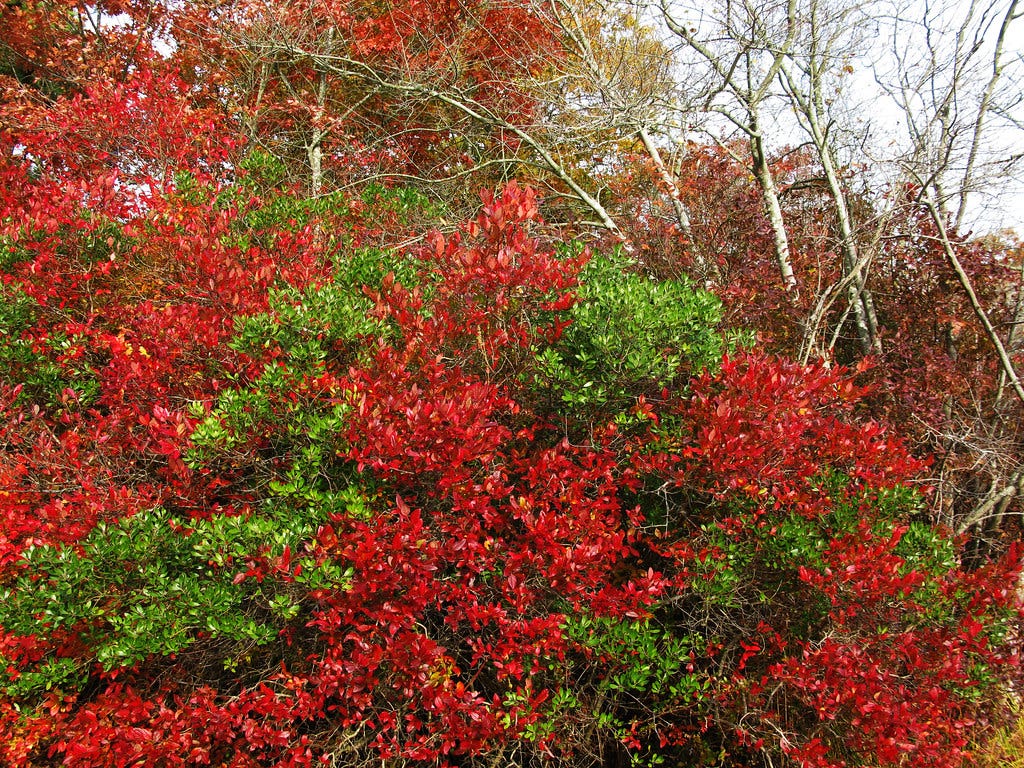
The pleasantly-scented leaves of fragrant sumac also turn red, orange, yellow and purple in the fall. Yellowish catkin-like flowers precede dark red berries that persist into March. It serves as a larval host, attracts butterflies and birds, and provides food for birds and small mammals over the winter. While not as sweet as blueberries, the fruit of sumac is also edible for humans. It can be used fresh in teas or dried and ground as a spice.
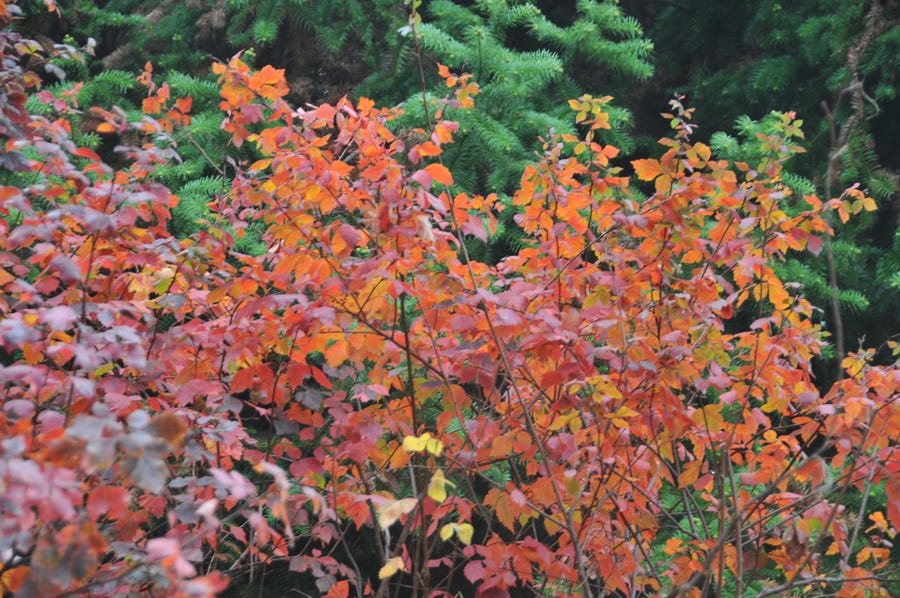
Invasive: Scotch broom (Cytisus scoparius)
Scotch broom is native to western and central Europe. It’s a perennial shrub with bright yellow flowers in early summer. It competes successfully with native species on poor, dry and sandy soils. It creates dense, impenetrable stands that become fire hazards. It’s invasive along most of the West and some of the East coasts of the U.S. It’s listed as invasive in 13 states. You folks west of the Rockies are probably quite familiar with it. There are also French and Spanish brooms to watch out for.
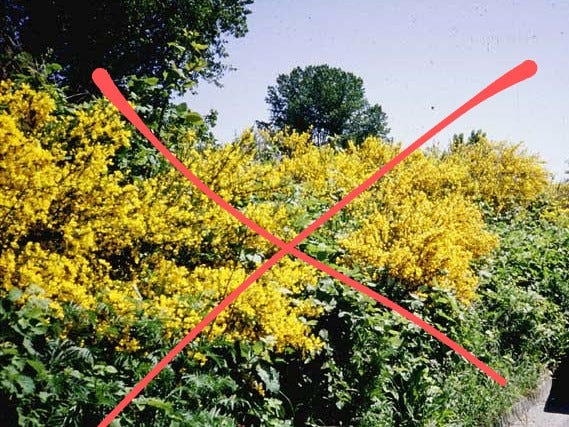
Native Alternatives: California broom (Acmispon glaber), orange bush monkeyflower (Diplacus aurantiacus) or golden currant (Ribes aureaum)
It’s hard to find information on California broom. Perhaps it’s not widely available? But it’s native to – you guessed it – California. Let’s do our part to give this native stunner the spotlight it deserves. It grows in full sun and blooms March to May. Its flowers go from yellow to red to orange as they age. Okay, its showy season is not really in the fall, but those colors fit today’s theme!
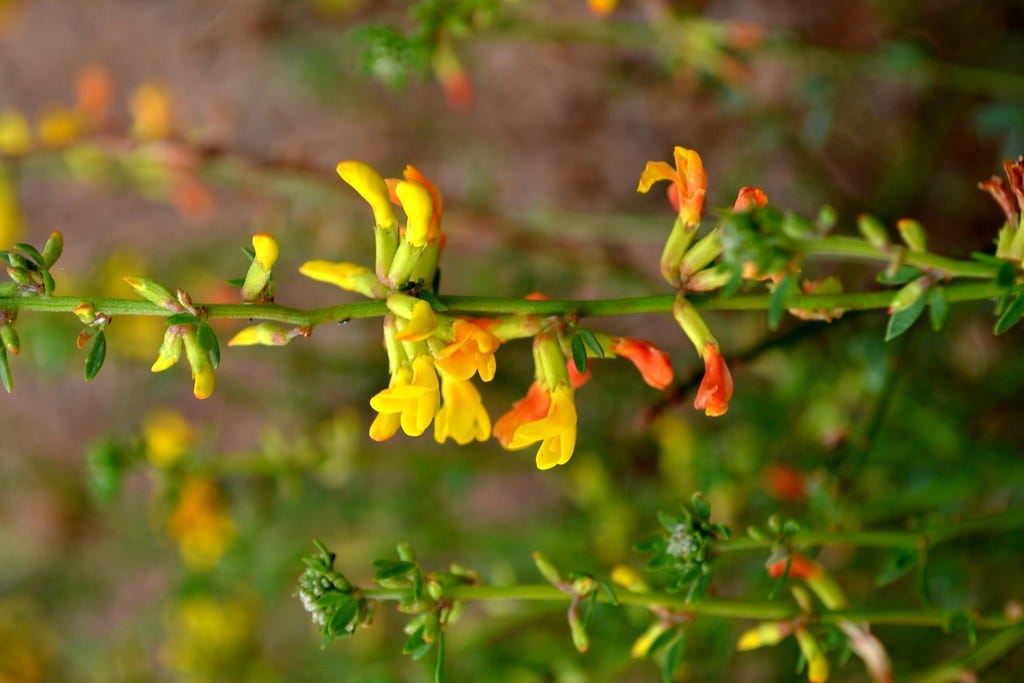
Orange bush monkeyflower blooms from March through August, making it a reliable source of nectar for hummingbirds. Plus, its bright orange or scarlet blossoms look like little monkey faces, making it a reliable source of amusement for humans. It’s native from southwestern Oregon to southern California and west to the base of the Sierra Nevadas.
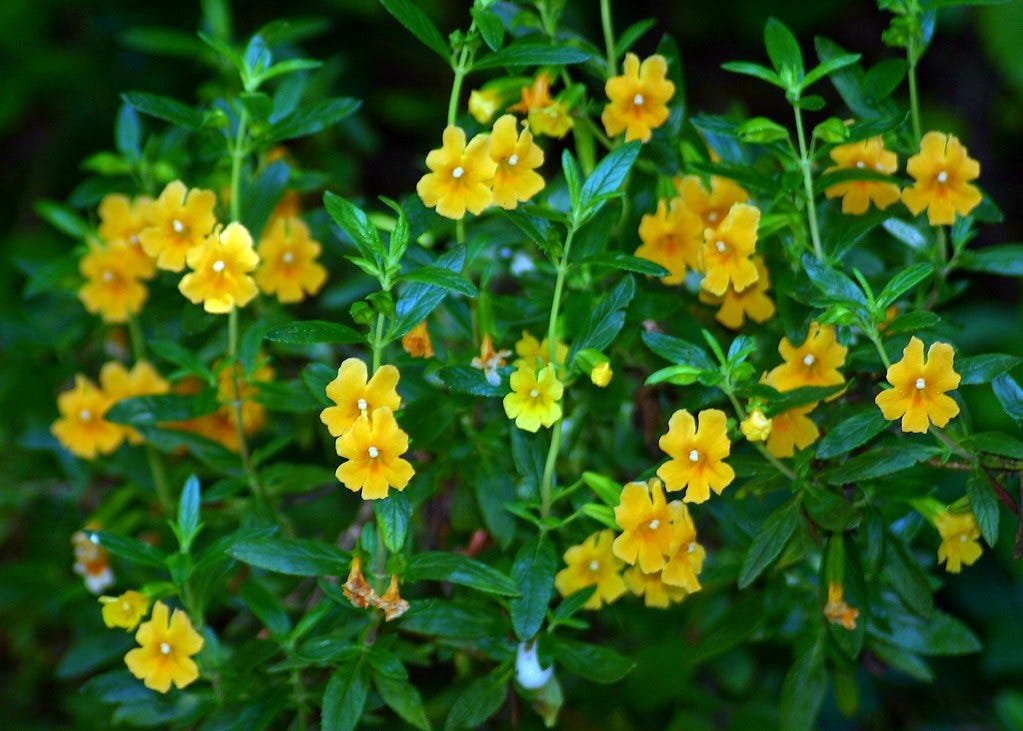
Golden currant is a deciduous shrub with spicy-scented racemes of yellow flowers that turn orange with age. Its berries are red, yellow or black when they ripen. Its flowers provide nectar to hummingbirds, butterflies and bees. Birds and other mammals eat the fruit. It’s native to the Western half of the U.S.
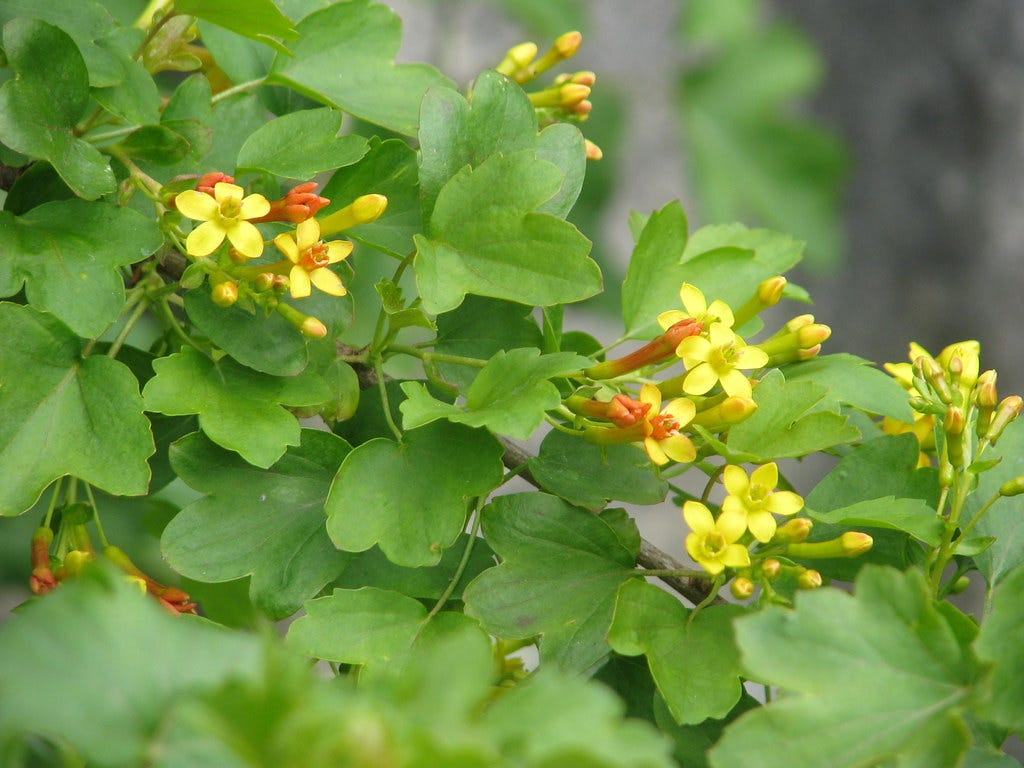
While you’re shredding your shrub shopping, I’m gonna bend the Bees’ Keys protocols to share a video that’s not technically a song. More like poetry. As only Amy Poehler and Maya Rudolph can do it.
Resources
Jill Swearingen, et. al., Plant Invaders of Mid-Atlantic Natural Areas, 4th edition, National Park Service and U.S. Fish and Wildlife Service, 2010.
Invasive Plant Atlas of the United States, University of Georgia and National Park Service.
“Plant This, Not That,” Direct Native Plants.
“5 Health Benefits of Anthocyanins: Why You Should Explore the Purple End of the Food Spectrum,” Cleveland Clinic website, June 2, 2022.



